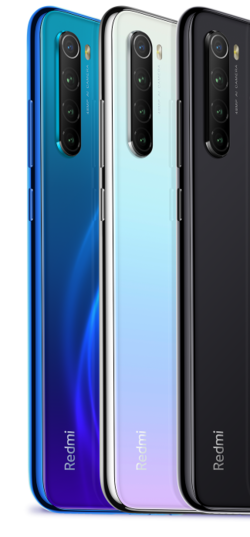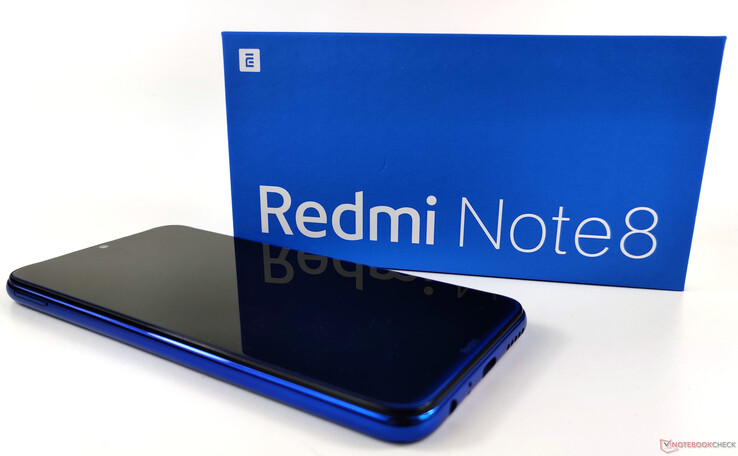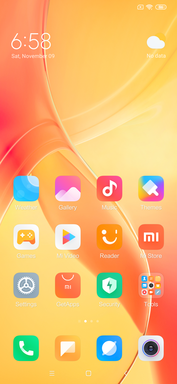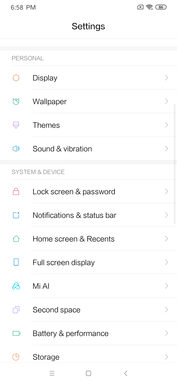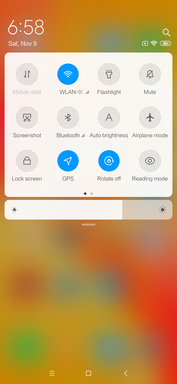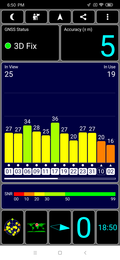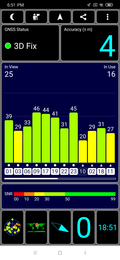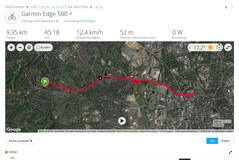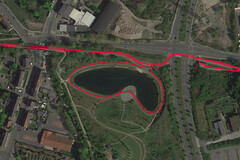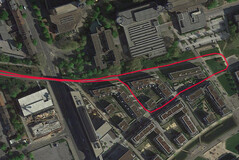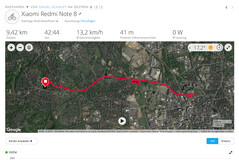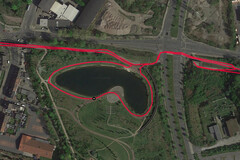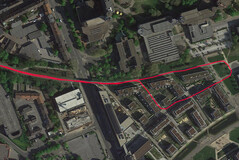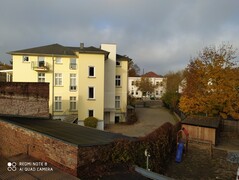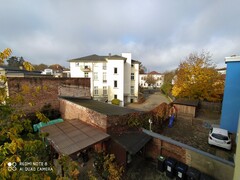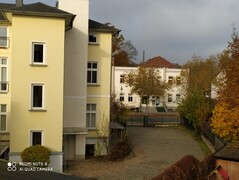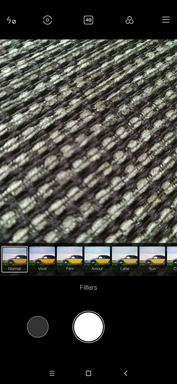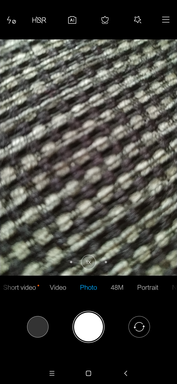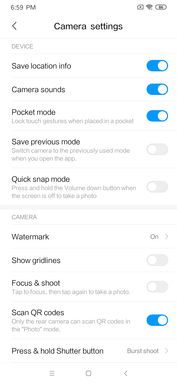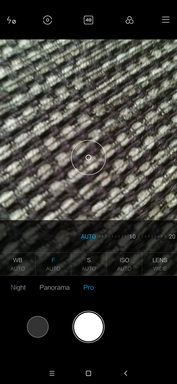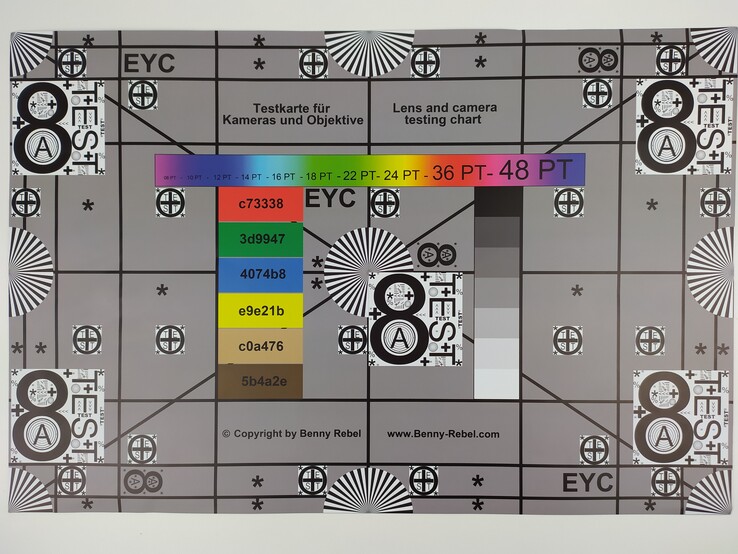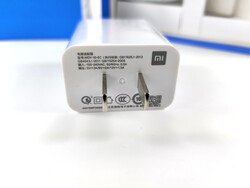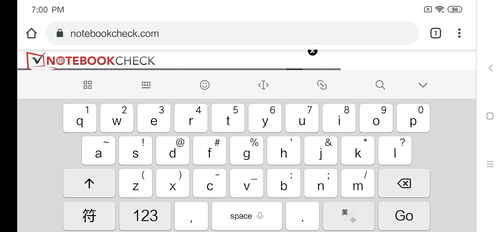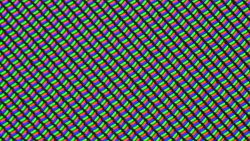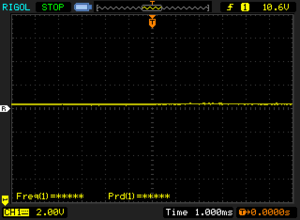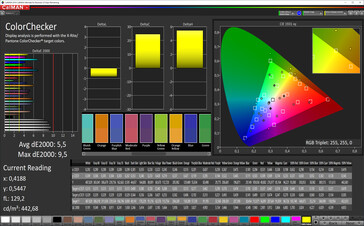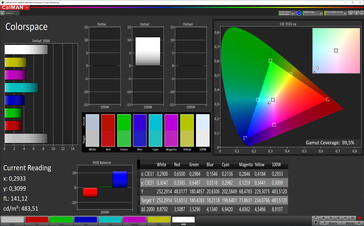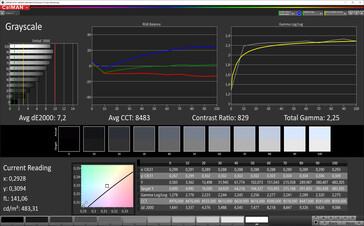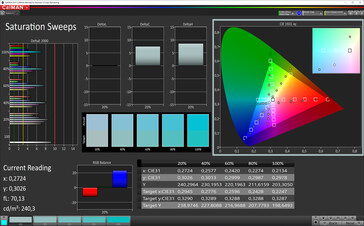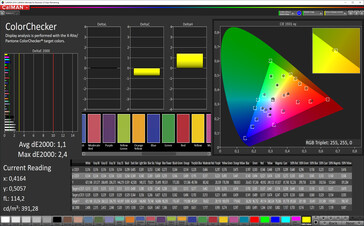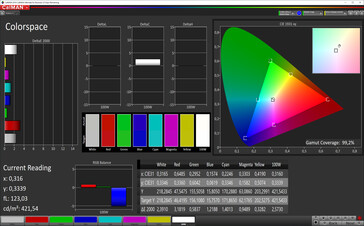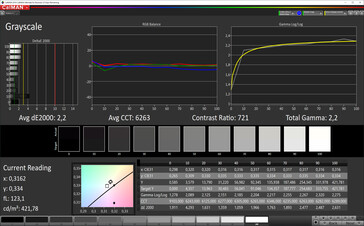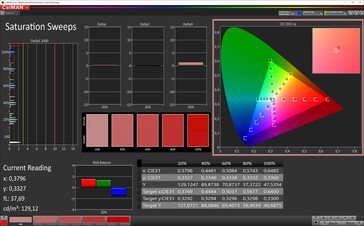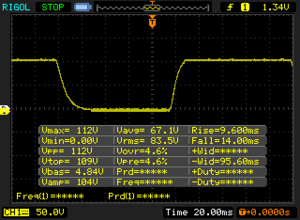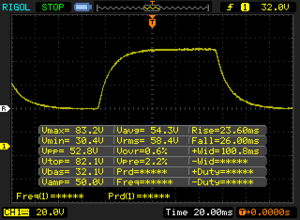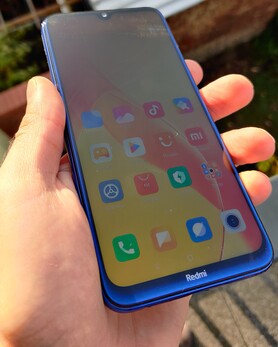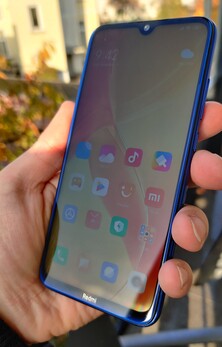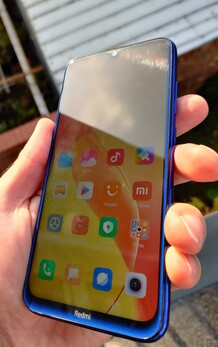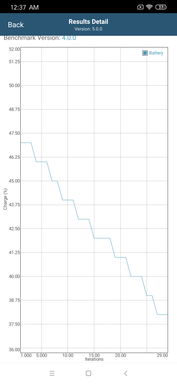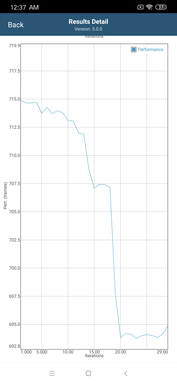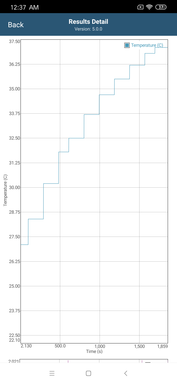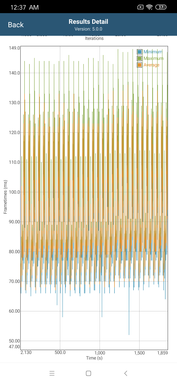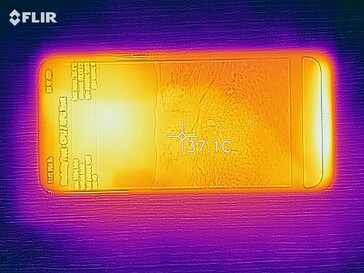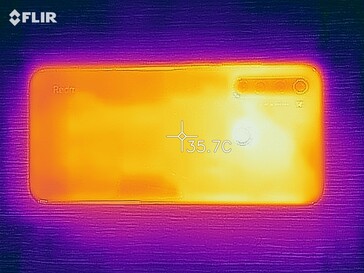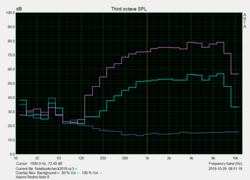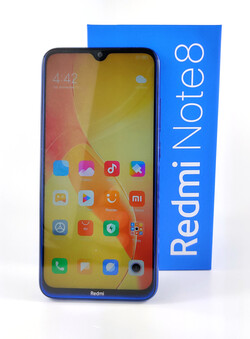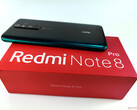Xiaomi Redmi Note 8 Smartphone Review: A display dream for the price-conscious buyer
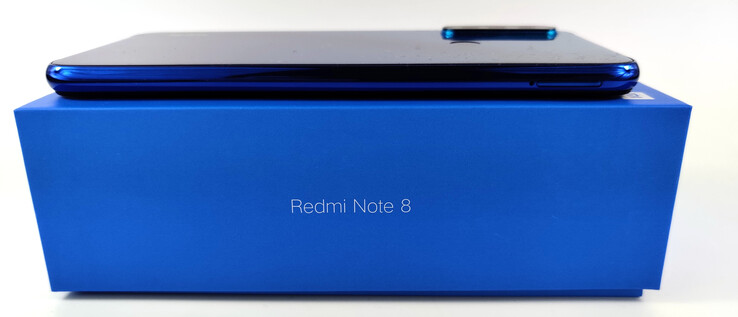
Xiaomi launched the Redmi Note 8 at the end of August in China but has only just brought the Redmi Note 7 to European shores. While our review unit costs around 30 Euros (~$33) more than the Chinese version of the Redmi Note 8, it does come with 2 GB more RAM and an additional 64 GB of storage. The Redmi Note 8 also comes in 32 GB or 64 GB variants, but they all have 6 GB of RAM.
The Redmi Note 8 includes many refinements over its predecessor, with its new quad rear-facing camera array being one of the greatest. The device has a 48 MP primary camera, an ultra-wide-angle sensor, and two identical sensors for macro shots and providing depth-of-field information. Xiaomi has upgraded its Redmi Note series to the Qualcomm Snapdragon 665, which also includes an Adreno 610 GPU.
Please see our table below for an overview of the Redmi Note 8 and the devices against which we will be comparing it.
Device overview
Rating | Date | Model | Weight | Drive | Size | Resolution | Price |
|---|---|---|---|---|---|---|---|
| 79.2 % v7 (old) | 11 / 2019 | Xiaomi Redmi Note 8 SD 665, Adreno 610 | 190 g | 128 GB eMMC Flash | 6.30" | 2340x1080 | |
| 78.4 % v7 (old) | 09 / 2019 | Xiaomi Mi A3 SD 665, Adreno 610 | 173.8 g | 64 GB UFS 2.1 Flash | 6.09" | 1560x720 | |
| 80.7 % v6 (old) | 06 / 2019 | Nokia 4.2 SD 439, Adreno 505 | 161 g | 32 GB eMMC Flash | 5.71" | 1520x720 | |
| 75.5 % v7 (old) | 07 / 2019 | Samsung Galaxy A20e Exynos 7884B, Mali-G71 MP2 | 141 g | 32 GB eMMC Flash | 5.80" | 1560x720 | |
| 75 % v7 (old) | 10 / 2019 | LG K50 Helio P22 MT6762, PowerVR GE8320 | 170 g | 32 GB eMMC Flash | 6.26" | 1520x720 | |
| 70.9 % v7 (old) | 10 / 2019 | Gigaset GS195 SC9863A, GE8322 / IMG8322 | 180 g | 32 GB eMMC Flash | 6.18" | 2246x1080 | |
| 84.6 % v6 (old) | 07 / 2019 | Honor 20 Lite Kirin 710, Mali-G51 MP4 | 164 g | 128 GB eMMC Flash | 6.21" | 2340x1080 |
Case - Glass meets plastic with stylish consequences
Xiaomi covers the front of the Redmi Note 8 with scratch-resistant Corning Gorilla glass, which blends smoothly into the 8.3 mm thick plastic frame of the device. The display has relatively thin bezels for a sub-200-Euro (~$220) handset, which its 82% screen-to-body ratio reflects.
Our review is well-built too. Xiaomi has not IP certified the Redmi Note 8, so we would recommend keeping the handset away from water. Its hardware buttons sit firmly in their housings though and hardly wobble when pressed. Their pressure points offer good feedback too.
While the device is comparatively thin, it feels rather bulky. The flat glass back is the issue here as it sits awkwardly in our hands. Its colour gradient effect is a nice touch and gradually turns from a purple hue in the lower half of the glass to a shade of turquoise at the top. Xiaomi sells the Redmi Note 8 in Moonlight White, Space Black and Neptune Blue; our review unit is the latter for reference.
Connectivity - Dual-SIM and microSD card slots
The Redmi Note 8 includes a notification LED, IR blaster, a 3.5 mm jack and supports Miracast for wirelessly connecting to external monitors. The device supports the USB On-The-Go (OTG) protocol too for connecting external peripherals like keyboards and mice, although the Type-C port only operates on the older USB 2.0 standard.
Our review unit has 128 GB of eMMC flash storage, of which around 108 GB was available when we first booted the handset. If 108 GB is not enough for you, then you can add up to a 256 GB microSD card. The integrated reader supports the SDHC and SDXC standards and can read the exFAT file system too. The device also has dedicated dual-SIM card slots, so you need not compromise between dual-SIM functionality and microSD card expansion.
DRM Widevine certification is an area where the Chinese and Global versions of the Redmi Note 8 differ. While the latter is L1 certified for streaming content from the likes of Amazon Prime and Netflix in HD, our review unit can only stream in SD. Its L3 certification is the source of this limitation and is something that Xiaomi cannot necessarily fix with a software update.
Software - MIUI 10 but differing DRM Widevine certifications
The Redmi Note 8 ships with MIUI 10, Xiaomi's in-house version of Android 9.0 Pie. Specifically, our review unit arrived running MIUI 10.3, which also has the September 2019 set of security patches preinstalled.
We should point out that while the Global model comes with Google Services and apps, the Chinese version does not. Xiaomi offers in-house alternatives instead, but third-party retailers like Trading Shenzhen, from whom we received our unit, offer guides on how to sideload Google Services and apps. You may still struggle with running the Play Store or other Google apps though, as Google has not certified the device to run them.
Communication & GPS - Fast Wi-Fi and dual-SIM connectivity
The Redmi Note 8 supports all modern mobile networks and LTE Cat. 12 for up to 600 Mb/s downloads. The global model supports 10 LTE bands and covers all relevant LTE frequencies for Europe except for Band 28, on which carriers will increasingly rely in the coming years. The Chinese version also dispenses with Band 20.
Xiaomi claims that the Redmi Note 8 supports Bluetooth 4.2. Oddly, the diagnostic app AIDA 64 states that our review unit utilises the newer 5.0 protocol, something that the Snapdragon 665 SoC also supports. There is no NFC chip, though.
The Redmi Note 8 supports up to IEEE 802.11ac too, so it can connect to 2.4 GHz and 5 GHz Wi-Fi networks. Our review unit obliterated the competition in our Wi-Fi tests, as the tables below demonstrate. While most of our comparison devices cannot average over 60 Mb/s in either test we ran, the Redmi Note 8 averaged over 300 Mb/s in both. Even the Xiaomi Mi A3 could not reach 200 Mb/s with our Linksys EA8500 reference router. In short, the Redmi Note 8 has excellent Wi-Fi performance for a sub-200-Euro (~$220) handset.
The device supports LTE on both its SIM card slots too. We encountered no mobile signal issues during our tests either.
| Networking | |
| iperf3 transmit AX12 | |
| Xiaomi Redmi Note 8 | |
| Xiaomi Mi A3 | |
| LG K50 | |
| Honor 20 Lite | |
| Samsung Galaxy A20e | |
| Nokia 4.2 | |
| Gigaset GS195 | |
| iperf3 receive AX12 | |
| Xiaomi Redmi Note 8 | |
| Xiaomi Mi A3 | |
| Samsung Galaxy A20e | |
| LG K50 | |
| Honor 20 Lite | |
| Nokia 4.2 | |
| Gigaset GS195 | |
The Redmi Note 8 uses Beidou, GPS, GLONASS, and SBAS for location services. Our review unit finds a satellite fix relatively quickly and to an accuracy of four metres outside. This drops to five metres indoors, but both are well above the class average.
We also took our review unit on a bike ride to test its location accuracy against a Garmin Edge 500, one of our reference bike computers. Only 70 metres separated the Redmi Note 8 from the Garmin over our nine-kilometre test run, making the former impressively accurate. Our review unit deviated only slightly from the Garmin's route too, so you should have no trouble with using the Redmi Note 8 for general navigation tasks like driving, cycling or walking.
Telephone Features & Call Quality
Our review unit has unremarkable call quality when connected to the Vodafone network in Germany. The earpiece reproduces voices clearly, as do the built-in microphones. We had no issues with using the front-facing camera for Skype calls either, although voice quality deteriorates if the speaker is set to maximum volume.
The Redmi Note 8 supports dual voice over LTE (VoLTE), but this will only work if carriers provision the device on their network. Since our review unit is a Chinese model, there is little chance of that happening with network providers in Germany or beyond. You may have more luck with the global variant, though. Neither version supports Wi-Fi calling.
Cameras - Four cameras including a 48 MP sensor
The Redmi Note 8 has four rear-facing cameras, along with a single front-facing one. Xiaomi has equipped the device with a Samsung GM1 as its primary rear-facing camera, a 48 MP sensor that has an f/1.75 aperture and a pixel size of 0.8 µm. There are also two 2 MP depth of field sensors with f/2.4 apertures for taking macro or zoomed-in shots and an 8 MP ultra-wide-angle sensor that has an f/2.2 aperture and a 120° field of view.
The Samsung GM1 can interpolate four adjacent pixels into one to create a more light-sensitive and detailed 12 MP image. Also called pixel binning, this technique works well in our review unit, helping it capture shots that look detailed and vivid. However, the GM1 struggles in low-light conditions just like the Motorola One Zoom that we recently reviewed. We did notice some image noise and artefacts even in sub-optimal daylight, though.
Likewise, the 13 MP front-facing camera takes decent looking selfies in good lighting, although sharpness and exposure levels are not great. The selfies are good enough for posting on social media in our opinion.
Overall, the Redmi Note 8 has an excellent set of cameras for a 200-Euro (~$220) handset. Not only has Xiaomi included good sensors, but the inclusion of an ultra-wide-angle sensor adds to the flexibility of its camera capabilities.
We also subjected the Samsung GM1 to further camera tests under controlled lighting conditions, the results of which you can view below. As our initial test shots suggested, the sensor reproduces colours vividly, albeit not always accurately. Brown and dark green are particular issues for the camera for some reason, as is dark orange and red.
Our review unit reproduced our test chart well too, although only in good lighting. As the photo below demonstrates, the Samsung GM1 picks out fine details and structures cleanly, but sharpness and contrast levels drop off towards the bottom edges of the chart. Our attempt at 1 lux looks an absolute mess, though.
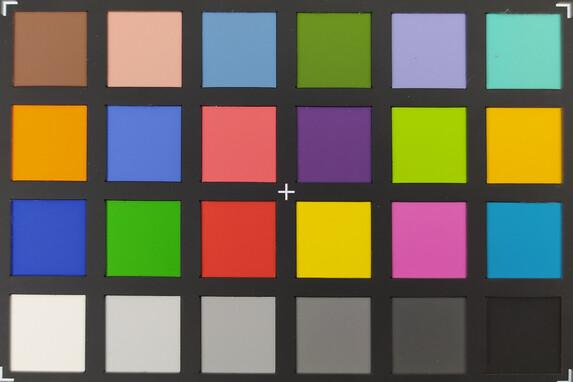
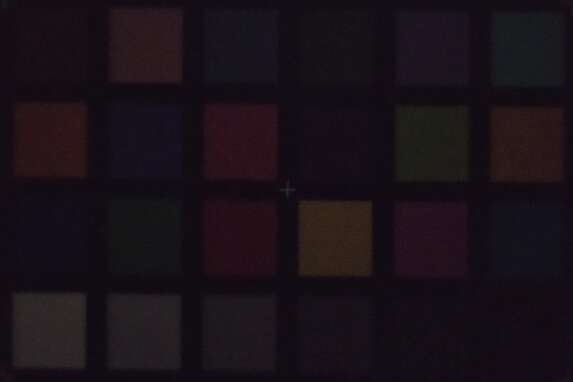
Accessories & Warranty - A silicone case and an 18 W charger in the box
The Redmi Note 8 comes with an 18 W modular charger, a USB cable, a protective cover. Trading Shenzhen included an EU adapter in the box and a USB OTG adapter, but neither Xiaomi nor other third-party suppliers will necessarily include these.
Xiaomi also affords the device a 12-month limited manufacturer's warranty from the date of purchase. However, this warranty only applies within Chinese territories, so you must return the device to China for a warranty return or exchange. Third-party suppliers like Trading Shenzhen will include additional warranty coverage with purchases though, meaning that you will not need to fork out on a costly returns service.
Please see our Guarantees, Return Policies & Warranties FAQ for country-specific information.
Input Devices & Operation - A classic fingerprint sensor and 2D facial authentication
The capacitive touchscreen in our review unit responds precisely to inputs, while it implements commands without delay. The device has a fingerprint scanner too for biometric authentication, which also worked well during our tests. The fingerprint scanner takes a while to unlock the device for some reason though. There is a face unlock method too, but this is not as secure as using a fingerprint.
Display - A bright, contrast-rich and colour accurate IPS panel
One of the highlights of the Redmi Note 8 is its 6.3-inch IPS display, which has a 19.5:9 aspect ratio. The panel resolves at 2340x1080 for a pixel density beyond 400 PPI, which is sharp enough for everyday usage.
The panel gets impressively bright too. X-Rite i1Pro 2 measures peak average luminosity at 643 cd/m² on automatic display mode with the ambient light sensor switched on. Similarly, the more realistic APL50 test determined that the display can reach 638 cd/m². Disabling the brightness sensor drops peak luminosity to 485 cd/m², though.
| |||||||||||||||||||||||||
Brightness Distribution: 95 %
Center on Battery: 656 cd/m²
Contrast: 1215:1 (Black: 0.54 cd/m²)
ΔE ColorChecker Calman: 1.1 | ∀{0.5-29.43 Ø4.82}
ΔE Greyscale Calman: 2.2 | ∀{0.09-98 Ø5.1}
99.2% sRGB (Calman 2D)
Gamma: 2.2
CCT: 6263 K
| Xiaomi Redmi Note 8 IPS, 2340x1080, 6.3" | Xiaomi Mi A3 AMOLED, 1560x720, 6.1" | Nokia 4.2 IPS, 1520x720, 5.7" | Samsung Galaxy A20e IPS, 1560x720, 5.8" | LG K50 IPS, 1520x720, 6.3" | Gigaset GS195 IPS, 2246x1080, 6.2" | Honor 20 Lite IPS, 2340x1080, 6.2" | Xiaomi Mi 9 AMOLED, 2340x1080, 6.4" | |
|---|---|---|---|---|---|---|---|---|
| Screen | -191% | -114% | -160% | -89% | -155% | -92% | 8% | |
| Brightness middle | 656 | 348 -47% | 445 -32% | 475 -28% | 489 -25% | 487 -26% | 455 -31% | 593 -10% |
| Brightness | 643 | 355 -45% | 424 -34% | 473 -26% | 453 -30% | 507 -21% | 456 -29% | 587 -9% |
| Brightness Distribution | 95 | 91 -4% | 91 -4% | 93 -2% | 85 -11% | 84 -12% | 94 -1% | 94 -1% |
| Black Level * | 0.54 | 0.26 52% | 0.35 35% | 0.42 22% | 0.55 -2% | 0.58 -7% | ||
| Contrast | 1215 | 1712 41% | 1357 12% | 1164 -4% | 885 -27% | 784 -35% | ||
| Colorchecker dE 2000 * | 1.1 | 5.86 -433% | 5.9 -436% | 6.8 -518% | 4.75 -332% | 5.67 -415% | 4.43 -303% | 0.9 18% |
| Colorchecker dE 2000 max. * | 2.4 | 15.6 -550% | 9.3 -288% | 13.4 -458% | 7.75 -223% | 13.54 -464% | 6.81 -184% | 2 17% |
| Greyscale dE 2000 * | 2.2 | 3.6 -64% | 6.8 -209% | 8.7 -295% | 4.6 -109% | 8.2 -273% | 5.4 -145% | 1.5 32% |
| Gamma | 2.2 100% | 2.232 99% | 2.2 100% | 2.33 94% | 2.164 102% | 2.27 97% | 2.248 98% | 2.27 97% |
| CCT | 6263 104% | 7051 92% | 8443 77% | 9385 69% | 7510 87% | 7569 86% | 7336 89% | 6548 99% |
* ... smaller is better
Screen Flickering / PWM (Pulse-Width Modulation)
| Screen flickering / PWM not detected | |||
In comparison: 53 % of all tested devices do not use PWM to dim the display. If PWM was detected, an average of 8291 (minimum: 5 - maximum: 343500) Hz was measured. | |||
The Redmi Note 8 also has a respectable black level, which we measured at 0.56 cd/m². This puts the panel on par with many of our IPS-equipped comparison devices and helps yield a respectable 1,215:1 contrast ratio. Photo spectrometer and CalMAN analysis reveal impressively low average Delta-E deviations from the sRGB colour space too. All values are better than the ideal value of three, while its colour temperature of 6,263 K is only just shy of our ideal value of 6,500 K.
Display Response Times
| ↔ Response Time Black to White | ||
|---|---|---|
| 23.6 ms ... rise ↗ and fall ↘ combined | ↗ 9.6 ms rise | |
| ↘ 14 ms fall | ||
| The screen shows good response rates in our tests, but may be too slow for competitive gamers. In comparison, all tested devices range from 0.1 (minimum) to 240 (maximum) ms. » 52 % of all devices are better. This means that the measured response time is worse than the average of all tested devices (20.4 ms). | ||
| ↔ Response Time 50% Grey to 80% Grey | ||
| 49.6 ms ... rise ↗ and fall ↘ combined | ↗ 23.6 ms rise | |
| ↘ 26 ms fall | ||
| The screen shows slow response rates in our tests and will be unsatisfactory for gamers. In comparison, all tested devices range from 0.165 (minimum) to 636 (maximum) ms. » 85 % of all devices are better. This means that the measured response time is worse than the average of all tested devices (32 ms). | ||
The display also gets bright enough to use the Redmi Note 8 outside without any restrictions. This only applies to when automatic mode and the ambient light sensor are active though, as otherwise the panel will look washed-out. You should encounter no readability issues even on bright sunny days too.
Performance - A Qualcomm Snapdragon 665 and 6 GB of RAM
Xiaomi has equipped the Redmi Note 8 with a Qualcomm Snapdragon 665, an SoC that represents a minor performance upgrade over the Snapdragon 660 found in devices like the Redmi Note 7. The 11 nm chip should offer better energy efficiency than its predecessor too. The SoC has eight cores split across two performance and energy-saving clusters, with four Cortex-A73 cores occupying the former and four Cortex-A53 cores in the latter. The Snapdragon 665 has an Adreno 610 on-board too.
The Snapdragon 665 and 6 GB of RAM combination not only matches the Xiaomi Mi A3 in synthetic benchmarks but also proved superior to the HiSilicon Kirin 710. This applied to our experiences in daily use too. The Redmi Note 8 cannot match the Mi 9T and its Snapdragon 710, though.
Conversely, the Adreno 610 in the Redmi Note 8 is closer to the Honor 20 Lite and its Mali-G51 MP4. By contrast, the lower-resolution display in the Xiaomi Mi A3 helps it to outperform our review unit. System performance is usually good in everyday use too, although there are some slight delays while multitasking.
| Basemark GPU 1.1 | |
| 1920x1080 Vulkan Medium Offscreen (sort by value) | |
| Xiaomi Redmi Note 8 | |
| Nokia 4.2 | |
| Xiaomi Mi 9T | |
| Nokia 8.1 | |
| Average Qualcomm Snapdragon 665 (n=1) | |
| Vulkan Medium Native (sort by value) | |
| Xiaomi Redmi Note 8 | |
| Xiaomi Mi A3 | |
| Nokia 4.2 | |
| Xiaomi Mi 9T | |
| Nokia 8.1 | |
| Average Qualcomm Snapdragon 665 (6.65 - 10.7, n=2) | |
| 1920x1080 OpenGL Medium Offscreen (sort by value) | |
| Xiaomi Redmi Note 8 | |
| Xiaomi Mi A3 | |
| Nokia 4.2 | |
| Xiaomi Mi 9T | |
| Nokia 8.1 | |
| Average Qualcomm Snapdragon 665 (8.24 - 12, n=2) | |
| VRMark - Amber Room (sort by value) | |
| Xiaomi Redmi Note 8 | |
| Xiaomi Mi A3 | |
| Nokia 4.2 | |
| Xiaomi Mi 9T | |
| Nokia 8.1 | |
| Average Qualcomm Snapdragon 665 (1092 - 1134, n=2) | |
| Average of class Smartphone (n=1last 2 years) | |
The Redmi Note 8 performed well in browser benchmarks with Google Chrome. The device loads websites quickly, and scrolling animations always remained fluid. The Redmi Note 8 also proved competitive in browser benchmarks.
| Jetstream 2 - 2.0 Total Score | |
| Average of class Smartphone (13.8 - 387, n=153, last 2 years) | |
| Xiaomi Mi A3 (Chrome 76) | |
| Xiaomi Redmi Note 8 (Chrome 78) | |
| Honor 20 Lite (Chrome 75) | |
| Average Qualcomm Snapdragon 665 (22.9 - 31.2, n=6) | |
| Samsung Galaxy A20e (Chrome 72.0.3626.121) | |
| Nokia 4.2 (Chrome 74) | |
| JetStream 1.1 - Total Score | |
| Honor 20 Lite (Chrome 75) | |
| Xiaomi Mi A3 (Chrome 76) | |
| Xiaomi Redmi Note 8 (Chrome 78) | |
| Average Qualcomm Snapdragon 665 (33.4 - 51, n=8) | |
| Samsung Galaxy A20e (Chrome 72.0.3626.121) | |
| Nokia 4.2 (Chrome 74) | |
| LG K50 (Chrome 77) | |
| Speedometer 2.0 - Result | |
| Average of class Smartphone (15.2 - 585, n=136, last 2 years) | |
| Honor 20 Lite (Chrome 75) | |
| Xiaomi Redmi Note 8 (Chrome 78) | |
| Xiaomi Mi A3 (Chome 76) | |
| Average Qualcomm Snapdragon 665 (25.4 - 30.8, n=6) | |
| Samsung Galaxy A20e (Chrome 72.0.3626.121) | |
| Nokia 4.2 (Chrome 74) | |
| WebXPRT 3 - Overall | |
| Average of class Smartphone (38 - 347, n=55, last 2 years) | |
| Honor 20 Lite (Chrome 75) | |
| Xiaomi Mi A3 (Chrome 76) | |
| Xiaomi Redmi Note 8 (Chrome 78) | |
| Average Qualcomm Snapdragon 665 (38 - 58, n=9) | |
| Samsung Galaxy A20e (Chrome 72.0.3626.121) | |
| Nokia 4.2 (Chrome 74) | |
| LG K50 (Chrome 77) | |
| Octane V2 - Total Score | |
| Average of class Smartphone (2228 - 100368, n=204, last 2 years) | |
| Honor 20 Lite (Chrome 75) | |
| Xiaomi Redmi Note 8 (Chrome 78) | |
| Xiaomi Mi A3 (Chrome 76) | |
| Average Qualcomm Snapdragon 665 (6133 - 9671, n=9) | |
| Samsung Galaxy A20e (Chrome 72.0.3626.121) | |
| Nokia 4.2 (Chrome 74) | |
| LG K50 (Chrome 77) | |
| Mozilla Kraken 1.1 - Total | |
| LG K50 (Chrome 77) | |
| Nokia 4.2 (Chrome 74) | |
| Samsung Galaxy A20e (Chrome 72.0.3626.121) | |
| Honor 20 Lite (Chrome 75) | |
| Average Qualcomm Snapdragon 665 (4434 - 6719, n=9) | |
| Xiaomi Mi A3 (Chrome 76) | |
| Xiaomi Redmi Note 8 (Chrome 78) | |
| Average of class Smartphone (277 - 28190, n=158, last 2 years) | |
* ... smaller is better
Xiaomi equips the Redmi Note 8 with eMMC flash storage, which is a touch slower than the UFS equivalent in the Xiaomi Mi A3. Unsurprisingly, sequential read speeds are the most significant differences between the two Xiaomi smartphones here. The Redmi Note 8 has faster storage than all our comparison devices, though. Our review unit has a slightly slower microSD card reader than many of our comparison devices, but it is still satisfactory for a smartphone at this price.
| Xiaomi Redmi Note 8 | Xiaomi Mi A3 | Nokia 4.2 | Samsung Galaxy A20e | LG K50 | Gigaset GS195 | Honor 20 Lite | Average 128 GB eMMC Flash | Average of class Smartphone | |
|---|---|---|---|---|---|---|---|---|---|
| AndroBench 3-5 | 26% | -41% | -16% | -28% | -46% | -3% | 2% | 548% | |
| Sequential Read 256KB | 297.6 | 502 69% | 220.4 -26% | 300.4 1% | 263.4 -11% | 107.3 -64% | 288.1 -3% | 294 ? -1% | 2210 ? 643% |
| Sequential Write 256KB | 160.5 | 184 15% | 18.17 -89% | 103.6 -35% | 78.9 -51% | 29.42 -82% | 200.9 25% | 195.5 ? 22% | 1808 ? 1026% |
| Random Read 4KB | 84.8 | 126.9 50% | 17.51 -79% | 79.8 -6% | 52.1 -39% | 28.43 -66% | 38.7 -54% | 84.6 ? 0% | 296 ? 249% |
| Random Write 4KB | 91.2 | 117.4 29% | 4.31 -95% | 13.18 -86% | 12.03 -87% | 4.97 -95% | 73.1 -20% | 57.9 ? -37% | 340 ? 273% |
| Sequential Read 256KB SDCard | 71.6 ? | 67.8 ? -5% | 86.7 ? 21% | 79.2 ? 11% | 78.9 ? 10% | 80.9 ? 13% | 75.7 ? 6% | 78.1 ? 9% | |
| Sequential Write 256KB SDCard | 52.8 ? | 50.1 ? -5% | 65.9 ? 25% | 64.3 ? 22% | 58.9 ? 12% | 62.1 ? 18% | 66.9 ? 27% | 61.8 ? 17% |
Games - The Adreno 610 isn't always powerful enough
The Adreno 610 is powerful enough even to play complex 3D games smoothly. Incidentally, the touchscreen and associated sensors worked perfectly during our gaming tests.
We verified what framerates some popular games run at with GameBench, our go-to frame-rate tool. While older titles like Dead Trigger 2 will run at 60 FPS on high graphics settings, more complex games like PUBG Mobile will hover at 30 FPS on smooth graphics and 24.7 FPS on balanced graphics. However, Asphalt 9: Legends proved unplayable regardless of the graphics settings to which we set it. As the graphics below demonstrate, frame rates are all over the place and never exceed 31 FPS even on low graphics.
PUBG Mobile
Asphalt 9: Legends
Dead Trigger 2
Emissions - Moderate surface temperatures, and an ultra-linear speaker
Temperature
The chassis and the display of our review unit hardly heat up in everyday use, as demonstrated by our chart below. The heat development inside the Redmi Note 8 is more interesting, though. We checked the heat dissipation behaviour of our review unit by running several GFXBench benchmarks on a loop, screenshots of which we have included below. Many smartphones thermal throttle during the complex Manhattan 3.1 benchmark, but the Redmi 8 did not. On the contrary, framerates remained consistent throughout, so you should not experience any throttling under sustained load.
(+) The maximum temperature on the upper side is 36.2 °C / 97 F, compared to the average of 35.2 °C / 95 F, ranging from 21.9 to 247 °C for the class Smartphone.
(+) The bottom heats up to a maximum of 35.3 °C / 96 F, compared to the average of 33.9 °C / 93 F
(+) In idle usage, the average temperature for the upper side is 28.5 °C / 83 F, compared to the device average of 32.9 °C / 91 F.
Speakers
Xiaomi claims that the Redmi Note 8 has an ultra-linear speaker, and our review unit lives up to its marketing. The mono speaker reproduces audio linearly and reached almost 88 dB(A) during our tests, which is surprisingly loud. There is a 3.5 mm jack on-board too, allowing you to connect conventional headphones without scrambling for a USB Type-C adapter. The jack in our review unit outputs audio cleanly and pleasingly loudly, as is often the case with Xiaomi smartphones.
Xiaomi Redmi Note 8 audio analysis
(+) | speakers can play relatively loud (87.7 dB)
Bass 100 - 315 Hz
(-) | nearly no bass - on average 30.6% lower than median
(±) | linearity of bass is average (11.8% delta to prev. frequency)
Mids 400 - 2000 Hz
(+) | balanced mids - only 2.8% away from median
(+) | mids are linear (3.1% delta to prev. frequency)
Highs 2 - 16 kHz
(+) | balanced highs - only 4.6% away from median
(+) | highs are linear (3.2% delta to prev. frequency)
Overall 100 - 16.000 Hz
(±) | linearity of overall sound is average (19% difference to median)
Compared to same class
» 22% of all tested devices in this class were better, 9% similar, 69% worse
» The best had a delta of 12%, average was 36%, worst was 134%
Compared to all devices tested
» 43% of all tested devices were better, 8% similar, 49% worse
» The best had a delta of 4%, average was 24%, worst was 134%
Xiaomi Mi A3 audio analysis
(+) | speakers can play relatively loud (85.7 dB)
Bass 100 - 315 Hz
(-) | nearly no bass - on average 74.1% lower than median
(+) | bass is linear (0% delta to prev. frequency)
Mids 400 - 2000 Hz
(-) | nearly no mids - on average 74.1% lower than median
(+) | mids are linear (0% delta to prev. frequency)
Highs 2 - 16 kHz
(-) | nearly no highs - on average 74.1% lower than median
(+) | highs are linear (0% delta to prev. frequency)
Overall 100 - 16.000 Hz
(-) | overall sound is not linear (126% difference to median)
Compared to same class
» 96% of all tested devices in this class were better, 4% similar, 1% worse
» The best had a delta of 12%, average was 36%, worst was 134%
Compared to all devices tested
» 99% of all tested devices were better, 1% similar, 0% worse
» The best had a delta of 4%, average was 24%, worst was 134%
Power Management - A 4,000 mAh battery and good runtimes
Power Consumption
The Redmi Note 8 has a 4,000 mAh battery, which can be fully recharged in two hours with its 18 W charger. Our review unit has unremarkable power consumption.
| Off / Standby | |
| Idle | |
| Load |
|
Key:
min: | |
| Xiaomi Redmi Note 8 4000 mAh | Xiaomi Mi A3 4030 mAh | Nokia 4.2 3000 mAh | Samsung Galaxy A20e 3000 mAh | LG K50 3500 mAh | Gigaset GS195 4000 mAh | Honor 20 Lite 3400 mAh | Average Qualcomm Snapdragon 665 | Average of class Smartphone | |
|---|---|---|---|---|---|---|---|---|---|
| Power Consumption | -34% | -1% | 14% | 18% | -48% | -36% | -24% | -39% | |
| Idle Minimum * | 0.62 | 0.8 -29% | 0.74 -19% | 0.66 -6% | 0.7 -13% | 1 -61% | 0.9 -45% | 1.017 ? -64% | 0.864 ? -39% |
| Idle Average * | 1.77 | 2 -13% | 1.9 -7% | 1.63 8% | 1 44% | 2.1 -19% | 1.6 10% | 1.893 ? -7% | 1.428 ? 19% |
| Idle Maximum * | 1.8 | 3.3 -83% | 2.21 -23% | 1.67 7% | 1.8 -0% | 3.2 -78% | 2.2 -22% | 2.36 ? -31% | 1.589 ? 12% |
| Load Average * | 3.42 | 4.1 -20% | 3.04 11% | 2.77 19% | 2.4 30% | 4.7 -37% | 6 -75% | 3.77 ? -10% | 7.2 ? -111% |
| Load Maximum * | 6.14 | 7.7 -25% | 4.15 32% | 3.66 40% | 4.5 27% | 9 -47% | 9.1 -48% | 6.66 ? -8% | 10.8 ? -76% |
* ... smaller is better
Battery Life
The device also has decent battery life. The 4,000 mAh cell lasted 13:44 hours in our practical Wi-Fi test and 14:19 hours in our looped H.264 video test, which were both conducted at 150 cd/m² luminosity.
| Xiaomi Redmi Note 8 4000 mAh | Xiaomi Mi A3 4030 mAh | Nokia 4.2 3000 mAh | Samsung Galaxy A20e 3000 mAh | LG K50 3500 mAh | Gigaset GS195 4000 mAh | Honor 20 Lite 3400 mAh | |
|---|---|---|---|---|---|---|---|
| Battery Runtime | 14% | -16% | -11% | 0% | 6% | -17% | |
| Reader / Idle | 2139 | 1724 -19% | 1432 -33% | ||||
| H.264 | 859 | 1023 19% | 753 -12% | ||||
| WiFi v1.3 | 824 | 985 20% | 696 -16% | 715 -13% | 822 0% | 872 6% | 685 -17% |
| Load | 217 | 297 37% | 250 15% |
Pros
Cons
Verdict - A strong overall concept
The Redmi Note 8 is another successful entry-level smartphone from Xiaomi that offers plenty of power for those who are operating on a budget. The hardware that Xiaomi has included for around 150 Euros (~US$165) is remarkable, although please keep in mind that this pricing only applies to the imported version. The same applies to its high-quality workmanship and build quality, while we are fans of its large IPS panel too. Although the latter does not offer the contrast ratio of an OLED panel, it does use PWM to regulate luminosity, which is a bonus for those who are sensitive to that type of oscillation.
Xiaomi has hardly compromised in any areas either, but the 128 GB of storage and 6 GB of RAM top model costs almost the same as the Mi 9T or Mi 9 SE. While the Redmi Note 8 matches its Mi siblings in many areas, it cannot compete with them on camera performance.
The Xiaomi Redmi Note 8 is a triumphant entry-level smartphone. Make sure you buy the right version, though.
A word on buying an imported Chinese variant. Firstly, you may incur costly warranty exchanges or returns, which one would not experience with a handset bought in their local region. Secondly, the Chinese version of the Redmi Note 8 can only stream DRM-protected content in standard definition, a drawback that does not affect the European model. Finally, the Chinese model does not come with Google Play Services preinstalled, although these can be sideloaded. However, few smartphones at 200 Euros (~$220) offer as much as the Redmi Note 8, so we would wholeheartedly recommend checking out the European version if the issues that affect the Chinese model have put you off.
Xiaomi Redmi Note 8
- 11/12/2019 v7 (old)
Marcus Herbrich




